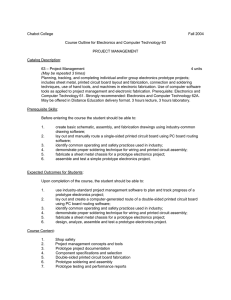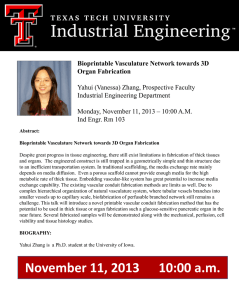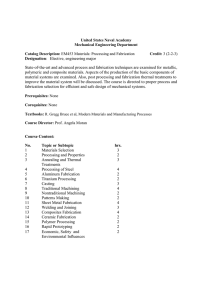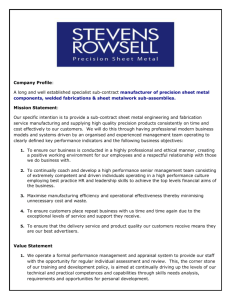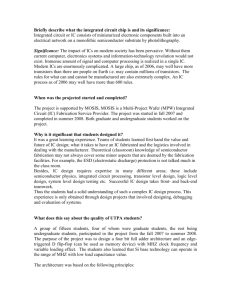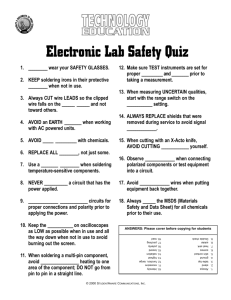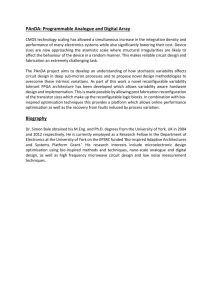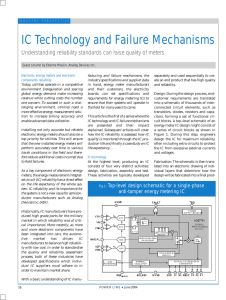Chabot College Fall 2004 Course Outline for Electronics and Computer Technology 61
advertisement
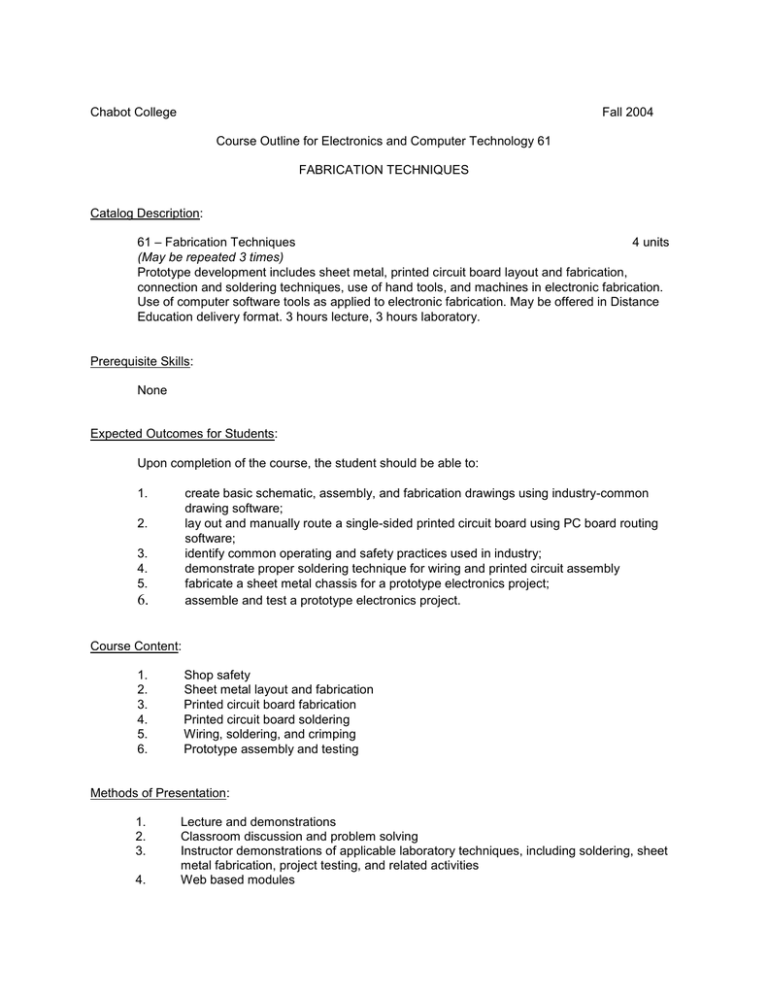
Chabot College Fall 2004 Course Outline for Electronics and Computer Technology 61 FABRICATION TECHNIQUES Catalog Description: 61 – Fabrication Techniques 4 units (May be repeated 3 times) Prototype development includes sheet metal, printed circuit board layout and fabrication, connection and soldering techniques, use of hand tools, and machines in electronic fabrication. Use of computer software tools as applied to electronic fabrication. May be offered in Distance Education delivery format. 3 hours lecture, 3 hours laboratory. Prerequisite Skills: None Expected Outcomes for Students: Upon completion of the course, the student should be able to: 1. create basic schematic, assembly, and fabrication drawings using industry-common drawing software; lay out and manually route a single-sided printed circuit board using PC board routing software; identify common operating and safety practices used in industry; demonstrate proper soldering technique for wiring and printed circuit assembly fabricate a sheet metal chassis for a prototype electronics project; assemble and test a prototype electronics project. 2. 3. 4. 5. 6. Course Content: 1. 2. 3. 4. 5. 6. Shop safety Sheet metal layout and fabrication Printed circuit board fabrication Printed circuit board soldering Wiring, soldering, and crimping Prototype assembly and testing Methods of Presentation: 1. 2. 3. 4. Lecture and demonstrations Classroom discussion and problem solving Instructor demonstrations of applicable laboratory techniques, including soldering, sheet metal fabrication, project testing, and related activities Web based modules Chabot College Course Outline for Electronics and Computer Technology 61, Page 2 Fall 2004 Assignments and Methods of Evaluating Student Progress: 1. Typical Assignments a. From a simple sketch, create a layout drawing for sheet metal fabrication using drawing software b. Fabricate a sheet metal chassis c. Use PC board routing software to create the fabrication files for a single-sided printed circuit board. d. Solder components to the printed circuit board and assemble the board and supporting components into the chassis. e. Test and document the performance of the finished prototype. 2. Methods of Evaluating Student Progress a. Class participation b. Laboratory projects and the resulting written reports c. Midterm and Final examinations Textbook(s) Typical: Electronic Techniques, Shop Practices and Construction, R. Villanucci, Prentice-Hall, 2002 Special Student Materials: Safety glasses, electronic components for prototype project. jc 10/28/03 ET61 course outline 1003.doc
